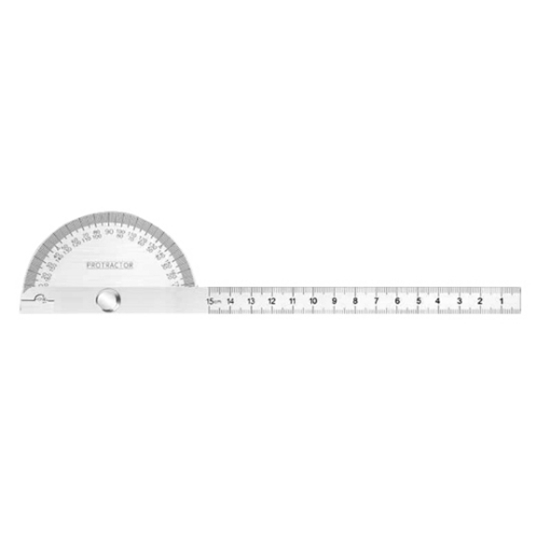
- Stock: In Stock
- Model: RDDLZ-AP-200
- Weight: 1.00
- SKU: RDDLZ-AP-200
Available Options
Buy the round head angle protractor for measuring the angle of cutting and mounting materials. The measuring range is adjustable from 0 to 180 degrees and the marker nut fixing mechanism is secure and prevents dislodgement.
Specification
- Model: RDDLZ-AP-90200
- Measuring Range: 0-180 degrees
- Size: 90x200mm
- Total Body Length: 247mm
- Diameter of Disc: 90mm
- Width: 16mm
- Body Thickness: 1mm
- Weight: 128g
Features
- 90x200mm Stainless steel angle protractors are highly accurate and precise in measuring angles, ensuring that your measurements are as close to perfect as possible.
- The 180-degree angle finder ruler has a laser scale for accurate and practical reading.
- The stainless steel construction of angle protractors makes them very durable and resistant to wear and tear, ensuring they can withstand frequent use and last for a long time.
- The stainless steel angle protractor is lightweight and compact, making them easy to carry around and use on the go.
Scribing method
- Adjust the protractor to the right angle and tighten the nut.
- Draw the desired angle and figure along the edge of the ruler.
Measuring Method
- Fit the protractor measurement close to the work.
- Adjust the semicircle to fit the other side of the workpiece.
- Just take a reading.
Dimension (Unit: mm)
Applications
Angle protractors are commonly used in fields such as construction, engineering, and carpentry to measure angles for cutting and fitting materials. They are also used in mathematics and physics to solve problems involving angles and trigonometry.
Tips: What is the maximum angle measurement capacity of a metal angle protractor?
The maximum angle measurement capacity of a metal angle protractor can vary depending on the specific protractor. However, most metal angle protractors typically have a maximum angle measurement capacity of 180 degrees. This allows them to measure angles ranging from 0 degrees to 180 degrees. Some protractors may have additional markings or features that allow them to measure angles beyond 180 degrees, but these are less common.
